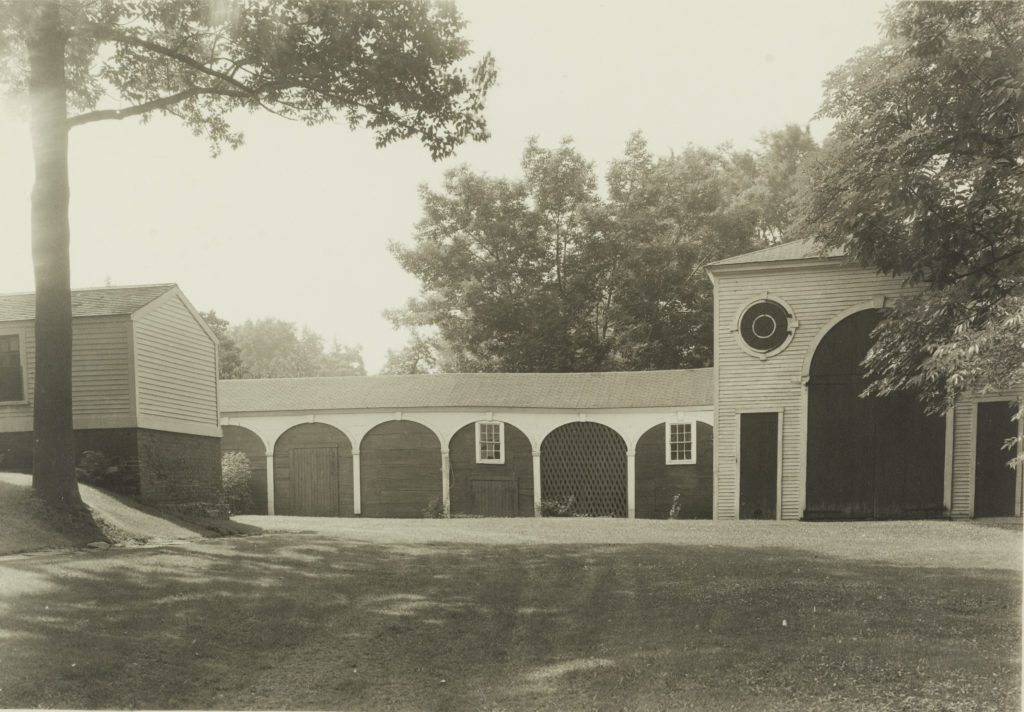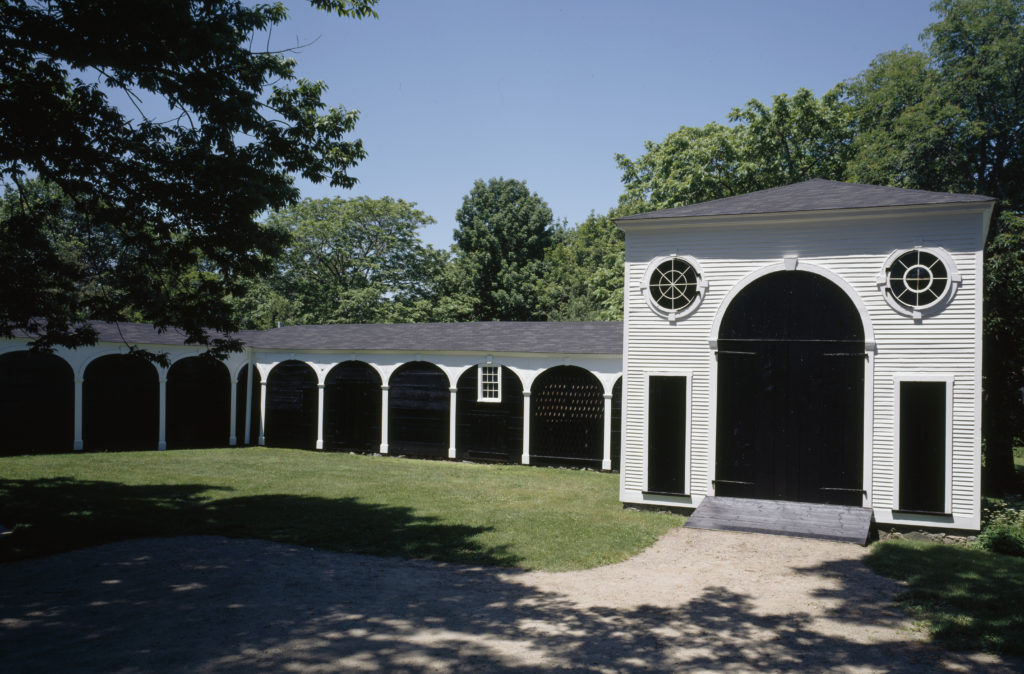 Rundlet-May House
Rundlet-May House
Carriage Barn: Practicality Versus Aesthetics

The carriage barn and stables are located at the end of a series of interconnecting outbuildings projecting from the rear of the house. These outbuildings, containing a tack room, pig sty, and potting shed, are original to the house and not the result of a pieced-together structure added over time. Neoclassical style trompe l’oeil arches complement the symmetrical and elegant architecture of the house and provide an aesthetic barrier to the service yard located behind the carriage barn. By family tradition, this area was referred to as the “cow yard,” and city tax records reveal that between 1825 and 1850, the Rundlets owned as many as four cows and four oxen.
Some of the most necessary tasks of nineteenth-century food preparation were also relegated to this area such as the occasional butchering of an animal. Its proximity to the scullery meant that animals could be “prepared” outside and brought into the scullery for further work before being cooked. Also to be noted was that it is also likely that manure was stockpiled nearby; a mixture of life tasks, sights, and smells, that all were a part of running the house.
